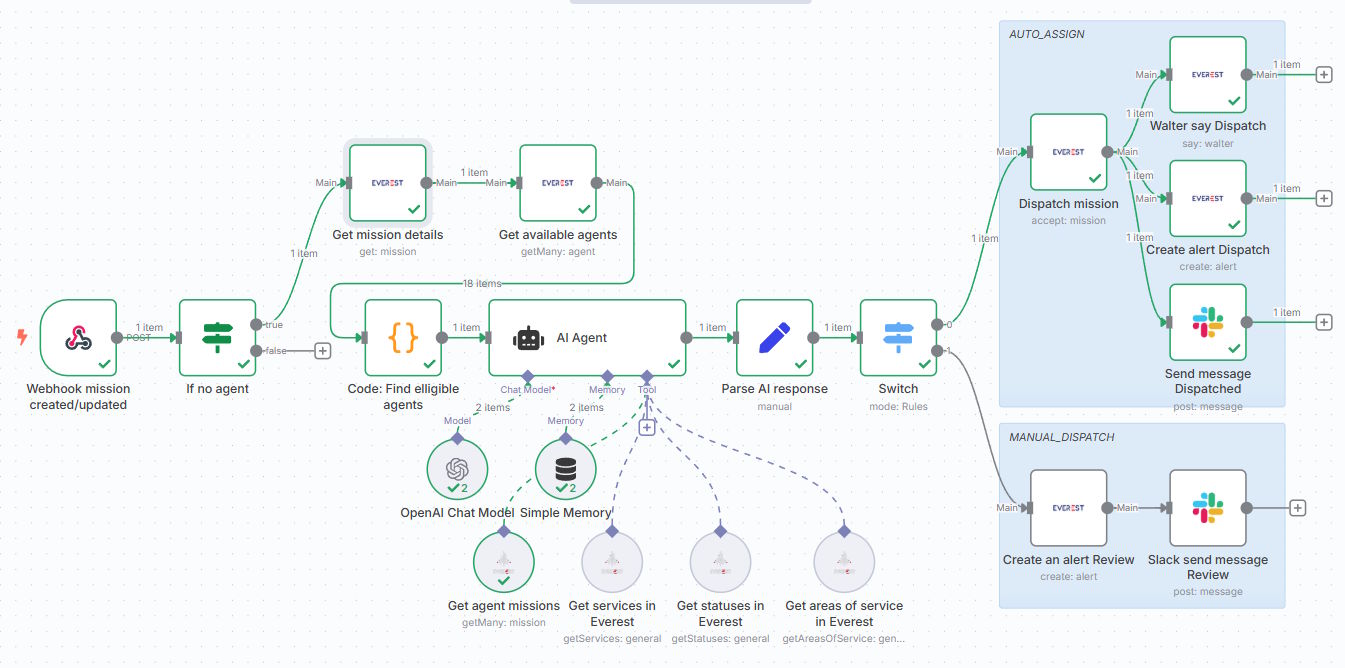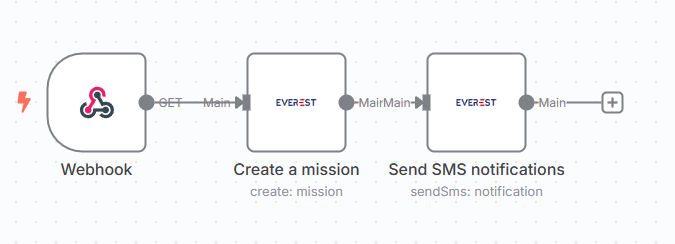Logistics automation with n8n: save 30% without a developer

Are your teams still spending 3 hours a day on manual data entry, route creation, and customer follow-up? No-code automation allows transport SMEs to reduce their operational costs by 30% without a technical team. Discover how n8n transforms your repetitive processes into automated workflows and frees up time to develop your business.
Why automation becomes essential in logistics
The hidden cost of manual processes
3h20 per day: this is the average time a logistics manager spends on repetitive administrative tasks according to sector studies. Extrapolated over the year, this represents more than 830 hours of work that could be automated.
The most time-consuming processes:
- Manual order entry between different systems
- Route creation and adjustment according to constraints
- Sending customer notifications and status updates
- Report generation and data synchronization
The problem? These tasks generate costly errors and prevent your teams from focusing on business growth.
Immediate ROI from automation
30% reduction in administrative costs Workflow automation saves on average 2 hours per day per employee on repetitive tasks.
5x reduction in processing errors No more lost orders, duplicates, or contradictory information between systems.
50% acceleration of processing cycles From order to invoice, your deadlines reduce thanks to automatic synchronization.
n8n: the tool that democratizes automation for SMEs
What is n8n and why choose this solution
n8n is a no-code automation platform that allows you to connect your existing tools without development. Drag-and-drop, connect, automate: in 30 minutes, you create workflows that would have taken you months to develop.
The advantages of n8n for logistics:
- Over 400 connectors available (CRM, ERP, TMS, messaging…)
- Intuitive visual interface: no need to know how to code
- Open-source: controlled costs and possible customization
- Self-hosted or cloud: you keep control of your data
Universal connectivity with your logistics tools
n8n connects natively to most tools used in logistics:
Management systems ERP (SAP, Odoo), CRM (Salesforce, HubSpot), TMS (Everest, other solutions)
Communication tools Email (Gmail, Outlook), SMS (Twilio), Slack, Microsoft Teams
E-commerce platforms Shopify, WooCommerce, Magento, marketplaces
Delivery services Carrier APIs, tracking tools, geolocation solutions
Concrete workflows to optimize your logistics
Workflow 1: Order processing automation
Objective: Automatically synchronize new orders between your e-commerce and your TMS.
Workflow steps:
- Trigger: New order detected on your e-commerce platform
- Filtering: Classification by geographic zone and product type
- Enrichment: Automatic calculation of weight, volume and constraints
- Mission creation: Automatic sending to your TMS via API
- Notification: Confirmation email to customer with tracking number
Time saved: 15 minutes per order Monthly ROI: €800 for 100 orders/month
Workflow 2: Automatic dispatch optimization
Objective: Automatically assign missions according to your business rules.
Workflow steps:
- Analysis: Reading new pending missions
- Geolocation: Calculation of optimal delivery zone
- Verification: Check driver availability
- Assignment: Automatic assignment according to defined criteria
- Alert: Push notification to driver via mobile application
Benefits: 5x faster dispatch, automatic fair distribution
Workflow 3: Proactive delay management
Objective: Anticipate and automatically manage delay situations.
Workflow steps:
- Monitoring: Real-time monitoring of ETA vs scheduled times
- Detection: Automatic identification of delay risks
- Calculation: Estimation of delay and impact on subsequent deliveries
- Communication: Automatic notification to customer with new time slot
- Reorganization: Reassignment proposal if necessary
Impact: 70% reduction in customer calls, improved satisfaction
Integrating n8n with your Everest TMS
Everest API: the gateway to automation
The Everest REST JSON API is designed to facilitate integration with tools like n8n. Complete documentation, optimized endpoints and webhooks allow for smooth connection.
Main possible integrations:
- Automatic mission creation from your external systems
- Bidirectional synchronization of delivery statuses
- Automatic export of data to your reporting tools
- Personalized notifications according to customer profile
Simplified technical configuration
Authentication: Secure API token Format: Standard JSON for all exchanges Webhooks: Real-time notifications of status changes Rate limiting: Intelligent management of call volume
Setup time: 1 hour for a basic workflow, 2 days for a complex integration.
Mistakes to avoid and best practices
Classic automation pitfalls
Wanting to automate everything at once Start with a simple and well-mastered process before tackling complex workflows.
Neglecting error handling Always plan a backup: what happens if the API doesn’t respond? If the data is incomplete?
Forgetting team training Automation changes habits: support your employees in this transition.
Best practices for success
Document your workflows Each automation must be documented to facilitate maintenance and evolution.
Test continuously Regularly monitor the proper functioning of your automations and their performance.
Evolve progressively Improve your existing workflows rather than constantly creating new ones.
Secure your access Use secure tokens and renew them regularly. Limit permissions to what is strictly necessary.
Calculate the ROI of your automations
Simple calculation method
Time saved = (Manual duration – Automated duration) × Number of occurrences
Hourly cost = Loaded salary / Hours worked
Monthly savings = Time saved × Hourly cost
ROI = (Annual savings – Tool cost) / Tool cost × 100
Concrete calculation example
Process: Manual creation of 200 missions per month Manual time: 10 minutes per mission Automated time: 30 seconds per mission Hourly cost: €35 (loaded)
Calculation:
- Time saved: (10 min – 0.5 min) × 200 = 1,900 minutes = 31.7 hours
- Monthly savings: 31.7h × €35 = €1,109
- Annual savings: €1,109 × 12 = €13,308
- n8n cost: €240/year
- ROI: 5,437%
Click here to test our Task Automation Evaluator!
Start your automation transformation
3-step action plan
Week 1: Audit and prioritization
- List your repetitive processes
- Time the time spent on each one
- Identify the 3 priority workflows
Week 2-3: First workflow
- Create your n8n account
- Configure your first simple workflow
- Test and refine
Week 4: Deployment and measurement
- Put your automation into production
- Measure the gains obtained
- Plan the next workflows
Support and resources
n8n documentation: Complete tutorials and active community Everest API: Technical documentation and developer support Training: Webinars and practical guides to get started
Conclusion: automation, your competitive advantage
Automation with n8n is no longer reserved for large companies. In 30 minutes, you can create your first workflow and start saving time and money from day one.
The benefits are immediate: fewer errors, more speed, teams freed up for value-added tasks. In a competitive sector like logistics, these efficiency gains make the difference.
At Everest, our API is designed to facilitate these integrations. Start small, think big: your first automated workflow can transform the way you work.
The question is no longer “should we automate?” but “which process to start with?”
Would you like to discuss this, request a demo?





